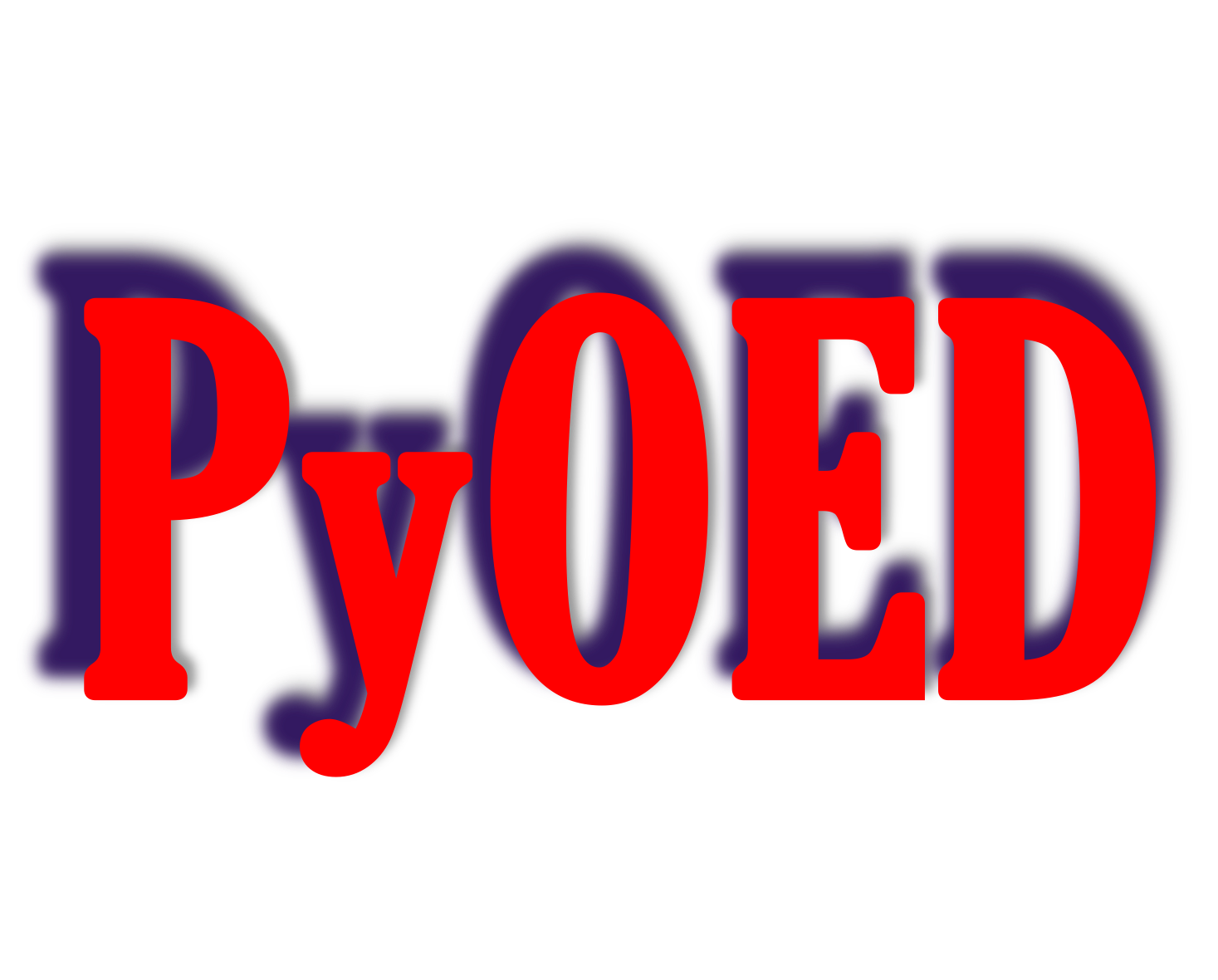2D Subsurface (Poisson) Model (FEniCS)#
|
A two dimensional Subsurface modeling model. |
|
A simple interface to creating an instance of Subsurf2D. |
A module that provides implementation(s) of Poisson Equations model(s) This module utilizes fenics (dolfin) if supported
- class Subsurf2DConfigs(*, debug=False, verbose=False, output_dir='./_PYOED_RESULTS_', model_name='Subsurf2D', screen_output_iter=1, file_output_iter=1, nx=64, ny=64, mesh_elements='Lagrange', mesh_elements_degree=(1, 2), random_seed=123)[source]#
Bases:
TimeIndependentModelConfigsConfigurations for the
Subsurf2Dmodel.- Parameters:
verbose (bool) – a boolean flag to control verbosity of the object.
debug (bool) – a boolean flag that enables adding extra functionlity in a debug mode
output_dir (str | Path) – the base directory where the output files will be saved.
model_name (str) – name of the model. Default is None.
screen_output_iter (int) – iteration interval for screen output. Default is 1. Note that this should be a positive integer to enforce proper effect.
file_out_iter – iteration interval for file output. Default is 1. Note that this should be a positive integer to enforce proper effect.
nx (int) – number of discretization points in x-direction
ny (int) – number of discretization points in y-direction
mesh_elements (str) – name/type of finite elements ‘Lagrange’ is the default value
mesh_elements_degree (tuple[int, int]) – degree of mesh elements
random_seed (int | None) – random seed to control synthetic ground truth generation if random noise is choosen for that.
- nx: int#
- ny: int#
- mesh_elements: str#
- mesh_elements_degree: tuple[int, int]#
- random_seed: int | None#
- __init__(*, debug=False, verbose=False, output_dir='./_PYOED_RESULTS_', model_name='Subsurf2D', screen_output_iter=1, file_output_iter=1, nx=64, ny=64, mesh_elements='Lagrange', mesh_elements_degree=(1, 2), random_seed=123)#
- class Subsurf2D(configs=None)[source]#
Bases:
TimeIndependentModel,RandomNumberGenerationMixinA two dimensional Subsurface modeling model.
- Parameters:
configs (dict) – an object holding model configurations. See
Subsurf2DConfigs
- validate_configurations(configs, raise_for_invalid=True)[source]#
Check the passed configuratios and make sure they are conformable with each other, and with current configurations once combined. This guarantees that any key-value pair passed in configs can be properly used
Note
Here only the locally-defined configurations in
Subsurf2DConfigsare validated. Finally, super classes validators are called.- Parameters:
configs (dict | Subsurf2DConfigs) – full or partial (subset) configurations to be validated
raise_for_invalid (bool) – if True raise
TypeErrorfor invalid configrations type/key. Default True
- Returns:
flag indicating whether passed configurations dictionary is valid or not
- Raises:
AttributeError – if any (or a group) of the configurations does not exist in the model configurations
Subsurf2DConfigs.PyOEDConfigsValidationError – if the configurations are invalid and raise_for_invalid is set to True.
- Return type:
bool
- create_initial_condition(method='sin', return_np=True)[source]#
Create the initial condition associated with the passed model grid points
- Parameters:
method (str) –
two methods are supported now:
’random’: create noramlly distributed noise vector
’deterministic’: this creates a predefined IC, given a hard-coded expression; will be fixed/updated/extended as needed
- Returns:
numpy array (same shape as model_grid associated with the model) holding initial condition values.
- parameter_vector(init_val=0, return_np=True)[source]#
Create an instance of model parameter vector.
- Parameters:
init_val (float) – value assigned to entries of the state vector
- Returns:
1d numpy array
- state_vector(init_val=0, return_np=True)[source]#
- Create an instance of model state vector.
Here, this is a 1D Numpy array of size equal to the model grid.
- Parameters:
init_val (float) – value assigned to entries of the state vector
- Returns:
1d numpy array
- solve_forward(parameter, return_np=True, verbose=False)[source]#
Solve the forward problem (parameter -> state)
- solve_adjoint(adj_rhs, eval_at=None, solve_for_param=True, return_np=True, verbose=False)[source]#
- Solve the variational adjoint problem;
and optionally solve for parameter!
- solve_incremental_forward(H_dir, parameter, state=None, return_np=True, verbose=False)[source]#
- Parameters:
parameter – parameter at which the Hessian is evaluated
state – state resulting by solving the forward problem using the passed parameter.
H_dir – direction in which to evaluate the Hessian (2nd-order derivative)
- solve_incremental_adjoint(H_dir, parameter, adj, adj_res, state, u_inc=None, return_np=True, verbose=False)[source]#
- Parameters:
parameter – parameter at which the Hessian is evaluated
state – state resulting by solving the forward problem using the passed parameter.
H_dir – direction in which to evaluate the Hessian (2nd-order derivative)
u_inc – incremental adjoint returned by
solve_incremental_forward()
- evaluate_second_order_sensitivities(H_dir, adj, inc_state, inc_adj, parameter, state=None, return_np=False, verbose=False)[source]#
Hessian-vector product of the data-misfit term in variational DA problems
- plot(vec, target='state', show_mesh=True, mesh_linewidth=0.1, mesh_linecolor='#FFAC67', clean_xy_ticks=True, xlim=None, ylim=None, title=None, fontsize=20, cmap='jet', alpha=0.95, dpi=800, add_colorbar=True, saveto=None, verbose=False)[source]#
Create a 2D triangulation plot of the passed state/parameter vector x
- Parameters:
vec – model state/parameter vector
target (str) – string identifying whether vec is a state or a parameter vector
show_mesh (bool) – show/hide mesh lines
mesh_linewidth
mesh_linecolor
clean_xy_ticks
xlim
ylim
title
fontsize
cmap
alpha
add_colorbar
saveto – filename/path to save plot to (format is set to ‘pdf’ not part of the filename)
verbose (bool) – screen verbosity
- property true_initial_condition#
- property state_dof#
dof/FunctionSpace correspnding the the model state
- property parameter_dof#
dof/functionspace correspnding the the model parameter
- property nx#
Number of grid points in the x-direction
- property ny#
Number of grid points in the y-direction
- property mesh_elements#
Type of mesh elements
- property mesh_elements_degree#
Degree of mesh elements
- create_Subsurf2D_model(nx=64, ny=64, mesh_elements='Lagrange', mesh_elements_degree=(1, 2), output_dir='./_PYOED_RESULTS_')[source]#
A simple interface to creating an instance of Subsurf2D.
- Parameters:
nx (int)
ny (int)
mesh_elements (str)
mesh_elements_degree
- Returns:
an instance of Subsurf2D with passed settings
